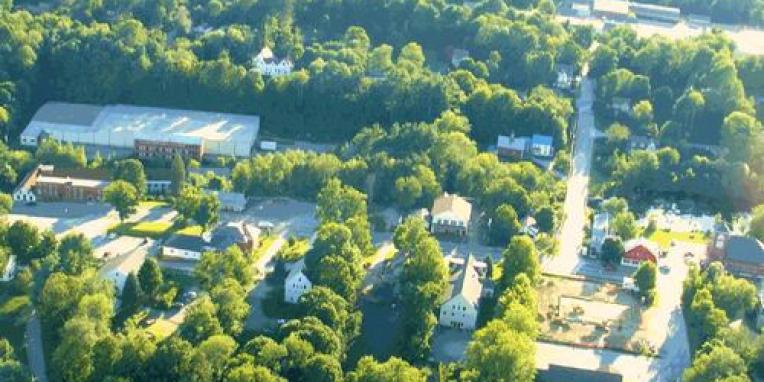Geology
The bedrock geology of the town is the solid rock mass that underlies the surficial deposits frequently found covering the landmass. Both metamorphic and igneous rocks underlie the town of Antrim. According to the 1997 Bedrock Geologic Map of New Hampshire, three major rock types may be found in town. They are in accordance with their geographic volumes (greatest to least) the Kinsman Granodiorite, the Spaulding Tonalite, and the Littleton Formation.
- The Kinsman Granodiorite was formerly known as the Kinsman Quartz Monzonite of Billings (1955). It is described as a foliated granite, Granodiorite and Tonalite with minor amounts of quartz diorite. It characteristically possesses large potassium feldspar megacrysts and locally abundant garnet zones. It is an igneous body that is known as the Cardigan Pluton of the New Hampshire Plutonic Suite. The Cardigan Pluton of the New Hampshire Plutonic Suite is lower Devonian in age and has been dated approximately between 410 and 420 million years old.
- The Spaulding Tonalite was formerly known in older literature as the Spaulding Quartz Diortie of Fowler-Billings (1949). It is presently described as a weakly foliated to non-folitated, spotted biotite diorite, tonalite, Granodiorite and granite. It is the dominant igneous rock type on the northeast side of town. It is known as the Antrim Pluton of the New Hampshire Plutonic Suite and its age is lower Devonian, just slightly younger than the Cardigan Pluton.
- The Littleton Formation is an undivided lower Devonian metamorphic rock body, which forms much of Riley Mountain on the northeast side of town. The Littleton Formation is comprised of gray, coarse-grained metasedimentary rocks that can be described as mica schist.




